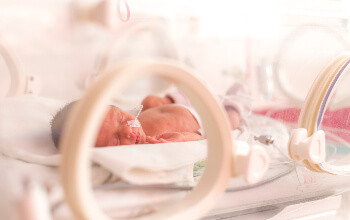
Labor and Delivery Nurse Facts
Before diving into the details of labor and delivery nursing, let’s get one thing straight - yes, women poop during labor, and no, it’s not uncommon. This is somehow still a relatively unknown fact. To put it into context, it’s more unusual for a woman not to have a bowel movement during labor. Pushing out a baby uses the same muscles as those for causing a bowel movement, which means if there’s anything in you, it’s going to come out.
Being a labor and delivery nurse means getting all the inside scoop about what labor is really like. People expect the delivery process to be similar to what they've seen on TV. Hate to break it to you, but labor looks nothing like how the media portrays. Whether you’re planning on becoming a labor and delivery nurse or you’re pregnant yourself, here is a list of interesting, fun, and sometimes heavy labor and delivery nurse facts.
What is an L&D Nurse
Before we dive into all these juicy facts, it might help to be on the same page. Labor and delivery nurses are the primary caregivers for women during the full process of childbirth. They are present through all four stages of delivery - stage one is contractions. Stage two is from when the cervix dilates to childbirth. Stage three is through post-delivery contractions. Stage four includes the hours after birth - and L&D nurses are responsible for monitoring the health of both mother and infant.
Responsibilities of an L&D Nurse
Labor and delivery nurses have many different responsibilities pre- and post-childbirth. They are there to educate new parents on what the delivery process will be and to answer any questions about labor and birth.
During labor, these nurse specialists will be monitoring both the baby’s heartbeat and the mother’s vitals. They will be the first responder to any complications. And when the physician is called in, they are second in command and act as the primary advocate for the mother.
Nurses will also keep records of the entire process, and once the childbirth is complete, they will assist the parents through discharging.
How to Become an L&D Nurse
There are a few different paths of nursing programs to working with mothers in delivery. All of them start with gaining your RN license. To do this, nurses must graduate with an ADN (Associate Degree in Nursing) or a BSN (Bachelor of Science in Nursing) and then complete the NCLEX (National Council Licensure Examination). Once you’ve done this, you are now eligible to work as an RN.
Starting out as a nurse can be tough in L&D units, but many registered nurses apply straight after their licensure. To gain additional responsibilities in this field, nurses can become certified by the National Certification Corporation. By taking and passing the Inpatient Obstetric Nursing exam (RNC-OB), you will become a certified labor and delivery nurse.
Labor and Delivery Nurse Facts
There is a stark contrast between a nurse’s point of view and that of the mother. For registered nurses, being yelled at for not checking up sooner or being asked for ice cubes to chew on is all part of the daily routine. For mothers, there is nothing routine about going into labor. To separate the two, we’ve compiled all the need-to-know labor and delivery facts into two categories: nurses and mothers.
Here’s some from the nurse’s point of view.
You See Every Type of Mother
As a labor delivery nurse, you’re going to be confronted by every type of mother-to-be. This includes the patient care of teens, incarcerated women, older moms, and the momzillas. The most shocking discovery is that there is no easy way to pinpoint who’s going to react what way to childbirth. Nurses have seen smaller women deliver enormous babies with little effort, and they’ve seen relatively mild cases turn into three-day marathons.
Developing Tight Bonds
Women are often surprised to find out the doctor is only called in for the final moments. While some doctors will check-in periodically to see how their patient is doing, for the most part, nurses let the doctor know when the patient arrives and when they’re ready to deliver.
For this reason, the labor and delivery nurse is the person mothers rely on. They are their advocate in the room, and nurses will often stay past their 12-hour shift to see through labor to the end.
Teamwork is Number One
While the attending OB gyn is in charge of making the final call, nursing students are often surprised at how much agency L&D nurses have in the delivery room. Labor is all about teamwork, and the L&D nurse has been with the mother in labor since the beginning (unless the delivery goes beyond their shift). When a nurse makes a call, they’re not demanding orders, they’re being an advocate for their patient.
Labor and Delivery Nurses Are Ready to Take Over
A word to mothers going into labor: Your L&D nurse is going to be your biggest ally in the room. When you’re in pain, sweaty, and irritated that your mother-in-law keeps on mentioning how easy labor was for her, all you need to do is pull on your right earlobe twice and give your nurse the secret wink. They will take it from there. Clearing the room to provide you with time to rest is their specialty.
Don’t be afraid to talk to the nurse one-on-one to let them know when it’s time to let them take over. L&D nurses have seen it all and heard it all, and they are ready to fight on your behalf.
It is the Most Rewarding and the Most Difficult Job
Being a part of a new family’s beginning is a magical, wonderful experience. Unfortunately, not all stories end with happily ever after. The CDC reports about 700 maternal pregnancy-related deaths per year. These are due to the many complications that can arise during childbirth—the most traumatic natural experience for the human body.
It’s tough to be a part of something so rewarding and to know that not all outcomes are positive. When a mother or child dies during childbirth, the rest of the family is traumatized, and nurses know the pain doesn’t stop there. Loss of a baby or mother can cause lifelong psychological trauma. When things go right, L&D nursing is one of the most rewarding jobs you can have. When things don’t go right though, difficult is an understatement.
Nurses Hear You, but There’s Nothing They Can Do
Most mothers will have a list of demands (or “requests”) for their L&D nurse every time they check in. Unfortunately, what most mothers don’t understand is that nurses have strict guidelines about what they can and can’t provide for women in labor. When they say no to pain medication or when they tell you you can’t eat, they’re doing that because it’s their job. It’s not done out of spite.
Labor and Delivery Facts About Mothers
Moms also have some shocking surprises in store for them when they come into the hospital to deliver their baby. And no, it’s not just the poop thing. Here are some facts to know about mothers in labor.
Most Women Do Not Experience Their Water Breaking
According to Sanford Health, only about 10-15% of women experience their water breaking before going into labor, debunking the common depiction seen in movies. In most cases, the doctor will induce this at the hospital after contractions have already begun.
Pregnancy Glow is a Real Thing
During pregnancy, blood is sent to the uterus to help with the delivery muscles. Once the labor is finished, the blood circulates back through the body, flushing the system and causing a secretion of natural oils on your skin. This combined effect turns into what’s known as pregnancy glow.
No More Eating
Once the labor and delivery process has begun, mothers-to-be will have to survive on whatever is in their stomach. Because of the possibility of requiring a C-section, hospitals are not allowed to give women food once labor has started. All they can offer in the form of solids are ice chips, which many request seconds of.
Not All Pain-Relief Works
Though not common knowledge, epidurals and anesthesia do not always work. Anesthesiologists explain that if the dural sac has any scarring or infection on it, the medicine may not be able to spread fully around a woman’s body. That means women could feel little to no effect, or they could only experience relief on one side of the body. This could also be due to the structure of the woman’s anatomy. Unfortunately, there’s nothing doctors can do; pain meds don’t work on everybody.
Your Birth Plan May Not Be Feasible
Most pregnant women are encouraged to detail out a birth plan, which is to be delivered to the L&D nurse and your gynecologist upon arrival. This can include what playlist you want during the delivery, what type of lighting, who can be in the room, and who cuts the cord. Unfortunately, most women write out such detailed and imaginative birth plans that nurses can’t help but ignore them.
A few notable requests on the birth plan include: no examinations of the mother’s private parts, referring to contractions as pressure waves, and no IV during the entire labor delivery process.
Some birth plans sound silly, while others make it harder for the medical team to perform their duties. If you’re considering a birth plan, try to make it reasonable and easy to follow.
You Will Poop During Labor
Aha! You probably thought this wasn’t going to make the list. Yup, anything that’s inside of you during labor will be outside of you by the time you’re out of labor. Don’t worry though, most women report that they barely noticed it happening due to the fact that childbirth is a little preoccupying. Plus, nurses are trained to swipe it away and clean you up in a matter of seconds. Really, there’s no reason to worry about this.
In fact, doctors try to help patients understand how natural of a process this is. Women who “hold it in” can end up having negative consequences for the birthing process.
History of Childbirth
History is known to have a brutal streak to it. Here are some other labor and delivery nurse facts from history.
Chloroform?
In 1853, chloroform as a form of sedative and pain reliever became all the rage when Queen Victoria used it to give birth to Prince Leopold. This was a landmark progressive statement contradicting the Church’s argument that God had established for women to bear children and all the suffering of childbirth.
You Are Now Entering the Twilight Zone
Doctors in the early 1900s came up with a way for women to forget the pain of childbirth using a concoction of morphine and scopolamine. It would put women into a hazy state they called Twilight Sleep. The practice would continue up until the 1960s when news of its side effects spread.
Spin Me Right Round, Baby
Here’s one that will make your head spin. In 1965, a patent for a new device to aid in the birthing process was submitted by married couple, George and Charlotte Blonsky. What was their ingenious device? It was a rotating table that would spin at high speeds to allow centripetal acceleration to work its magic. Babies would pop out into cotton nets to avoid harm.
You’re probably wondering, but what about the nausea this would induce? The Blonskys thought of this too and added a puke shield to cover the hospital staff. For some inexplicable reason, the device never gained popularity.
Labor and Delivery Nursing
A nursing career in L&D nursing is both physically and emotionally taxing. Nurses must be prepared to be “in action” for long stretches of time, sometimes for their entire 12-hour shift. It can be an incredibly rewarding position as well as a particularly devastating one. Overall, being a part of the creation of a new family is an invaluable experience. And this is exactly why plenty of L&D nurses adore their job.
Latest News
No results



